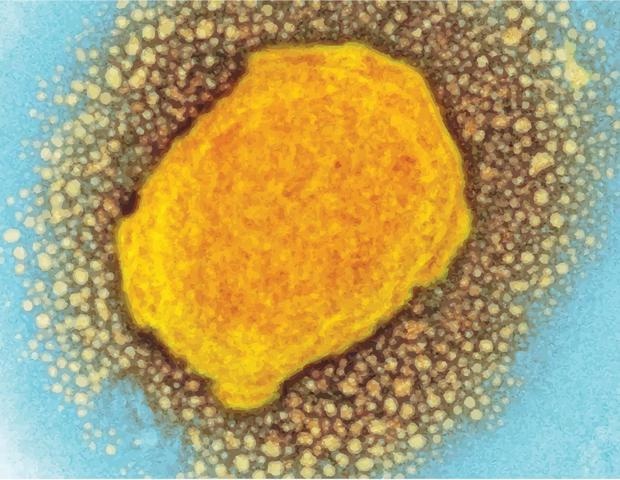The results do not prove that monkeypox infection can occur through contact with surfaces
During the outbreak of evolving monkeypox cases outside of known endemic areas, transmission is primarily through close physical contact with symptomatic individuals. Although virus transmission between humans has been described previously, data on environmental contamination of surfaces is scarce.
Environmental sampling in patient rooms
Norz et al. wiped surfaces in the immediate and adjoining rooms of two hospitalized patients with monkeypox in Germany. Patient isolation rooms were separated from the ward hallway by anterooms, where hospital staff put on and took off their personal protective equipment (donning and doffing).
Contamination with up to 105 viral copies/cm2 on inanimate surfaces was estimated by PCR and virus was successfully isolated from surfaces with more than 106 copies.
According to the authors, all surfaces that the two patients had directly touched showed viral contamination, with the highest loads detected in the two bathrooms (e.g. lever, sink, toilet seats). Fabrics such as towels, shirts or pillowcases that patients used frequently also showed viral contamination.
Viral contamination is not synonymous with infectious virus
The authors point out that there are currently no precise data on the dose of virus resulting in monkeypox infection in humans. However, it is assumed to require a significantly higher dose to trigger infection than, for example, the smallpox virus.
Norz et al. therefore point out that “despite high contamination with up to 105pc/cm2as well as successful recovery of monkeypox virus from samples with a total of >106copies, our results do not prove that infection can occur by contact with these surfaces”. Moreover, the detection of viral DNA by PCR “cannot be equated with an infectious virus”.
Prevention of virus spread from symptomatic patients should be individually tailored. Based on their findings, the authors conclude that “regular disinfection of frequent contact points of hands and skin during care processes in addition to regular cleaning of rooms and disinfection of surfaces using products having at least virucidal activity against enveloped viruses can reduce infectious virus on surfaces and thus risk nosocomial transmission”.
Source:
European Center for Disease Prevention and Control (ECDC)
Journal reference:
Nörz, D. et al. (2022) Evidence of surface contamination in hospital rooms occupied by patients infected with monkeypox, Germany, June 2022. Eurosurveillance. doi.org/10.2807/1560-7917.ES.2022.27.26.2200477.


Comments are closed.